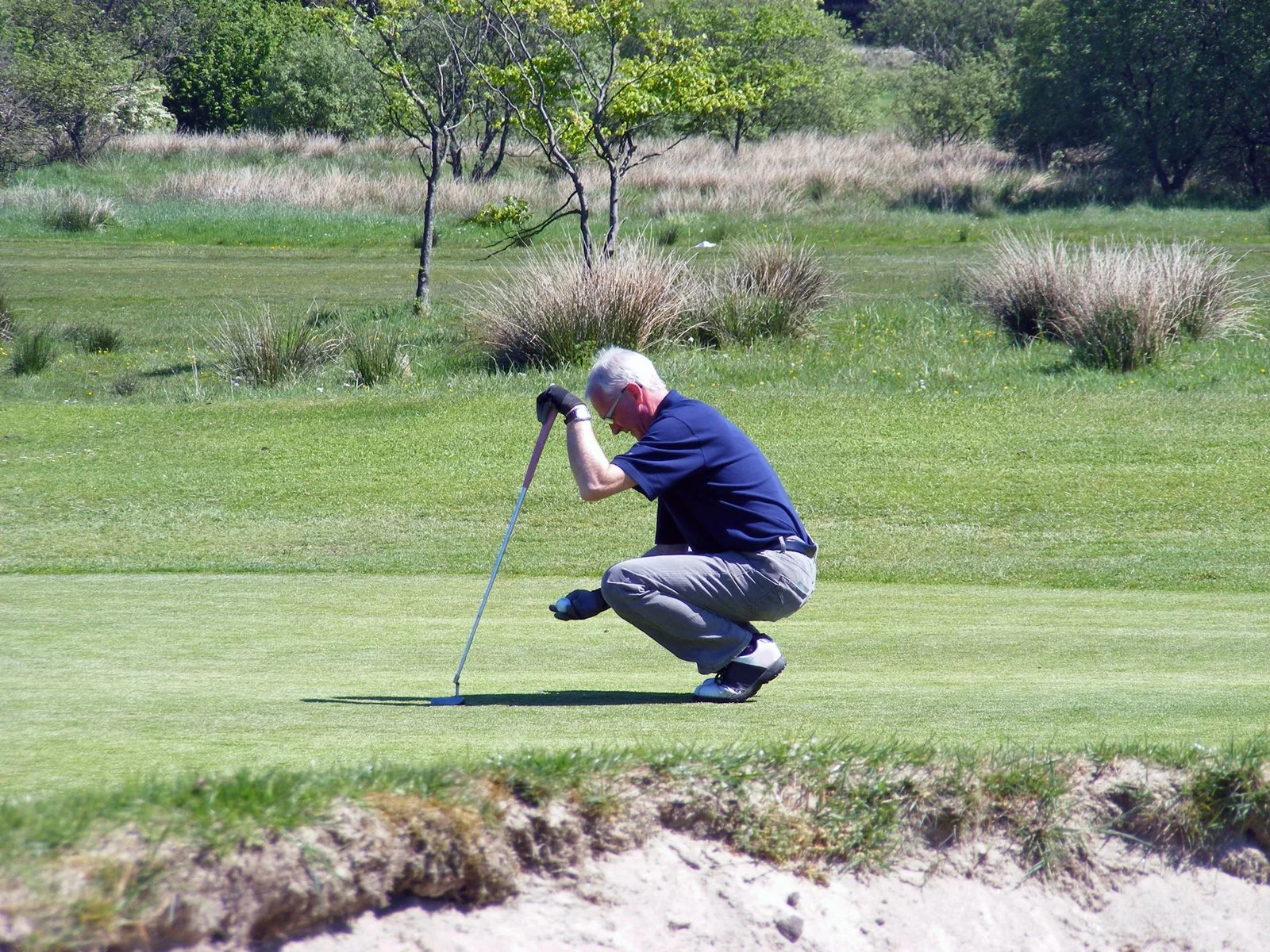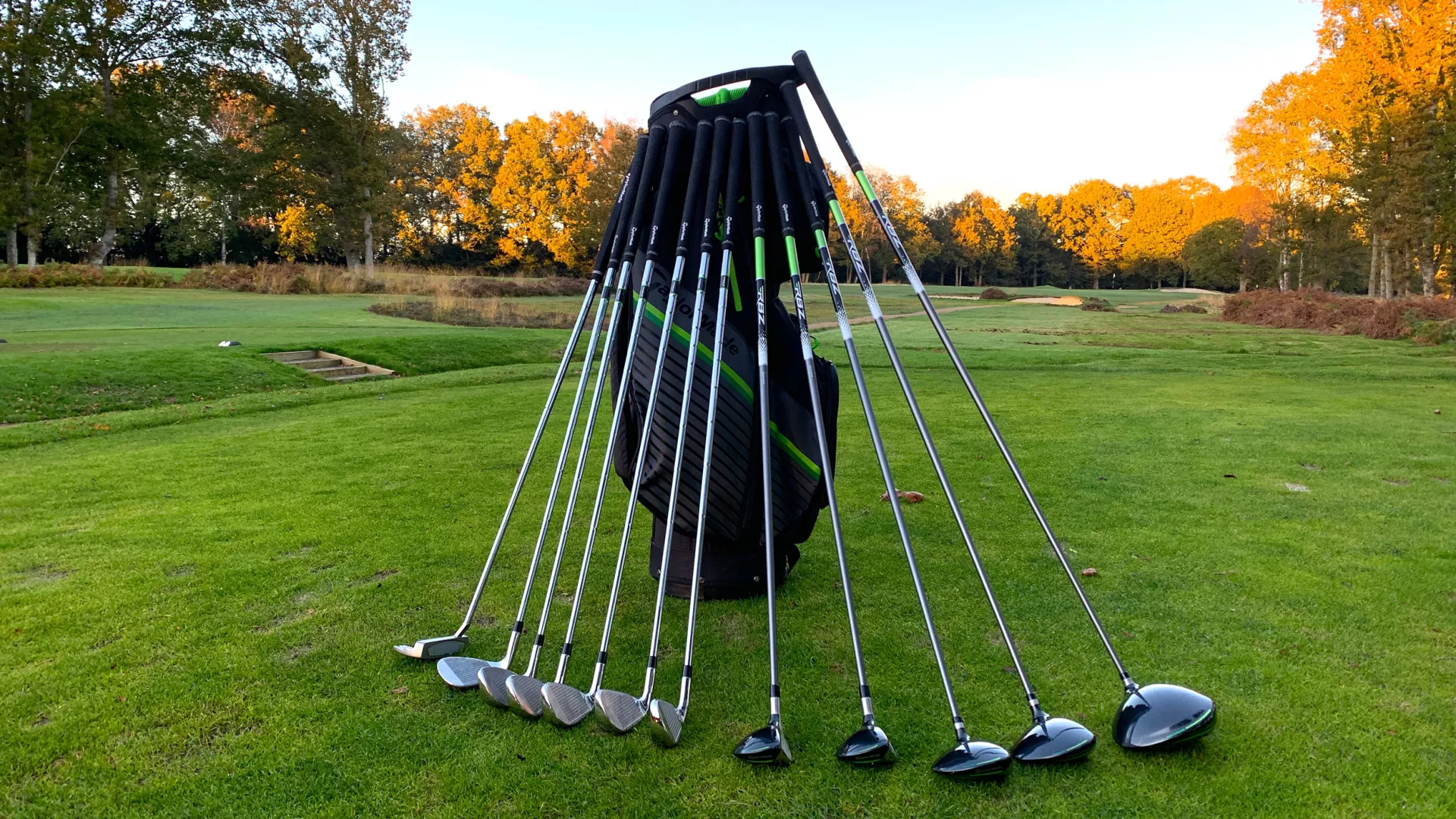We often get swept up in the quest for the ideal set of clubs. Yet, the engine that truly drives our game – the golf shaft – tends to fall by the wayside. The golf shaft’s significance on the course can’t be overstated; it’s the catalyst that can remarkably alter your game’s trajectory.
Still, misconceptions abound. Many amongst us are convinced that a stiffer shaft equates to superior distance. Some believe graphite shafts are solely reserved for seniors or those with a slower swing tempo.
In this guide, we’ll provide an all-encompassing perspective on selecting the golf shaft that truly resonates with you. As we delve into the nuances of different types of golf shafts and their unique traits, you’ll learn to align your choice with your personal swing and playing style.
The importance of selecting the right shaft
Picture this: A pristine golf course, azure skies overhead, the camaraderie of friends, and the gratifying thwack of a well-struck ball. Except, the ball makes an abrupt detour to the right and nests in the rough. Puzzled, you wonder: Could my shaft be the culprit?
In response: a resounding yes. Selecting the right golf shaft is as critical to your game as choosing the correct bathroom tiles with your wife. Without the appropriate tiles, the whole bathroom’s vibe remains elusive. The same applies to a golfer aiming for precision, distance, and consistency. If your shots are falling short of expectations, it’s worth investigating if an ill-suited golf shaft is hampering your performance.
Choosing the perfect golf shaft ranks high on the list of impactful decisions a golfer can make to elevate their game. The shaft is a critical part of the club. It influences the ball’s trajectory, spin rate, and distance. Thus, the right shaft can be a catalyst for a player’s performance. On the contrary, the wrong choice can lead to erratic shots, subpar performance, and even injury risks.
The selection process isn’t one-size-fits-all. Your individual swing dynamics – your swing speed, tempo, and release point – along with your playing style and skill level, are all key factors to consider. A well-chosen golf shaft can enhance your ball flight, distance, and accuracy, culminating in better scores and a more enjoyable golfing experience.
Graphite or Steel?
The choice of shaft material has profound implications on the club’s performance characteristics and, consequently, the player’s game.
Steel shafts are notably heavier, stronger, and usually less costly than graphite. Typically made from carbon steel (though sometimes stainless steel), their weight begins at around 120 grams.
The key advantage of steel shafts lies in their stability. The torque, or twisting that’s common in graphite shafts, isn’t present in steel, thus offering more control and focusing on accuracy rather than distance. As such, to achieve the same distance as a graphite shaft, a steel shaft requires a faster swing speed. Steel shafts come recommended for players with standard swing speeds who desire a bit more control in their play.
Graphite shafts are considerably lighter (weighing between 50 and 85 grams), less durable, and typically pricier compared to steel shafts. The reduced weight helps generate a higher swing speed for more power, although control may be compromised due to the flex during the swing.
Despite these differences, graphite shafts can be a good option for a broad range of golfers. They’re especially suited to women golfers and seniors who may find the swift swing speed required for effective use of a steel shaft challenging.
Shaft flex explained
The flex of a golf shaft plays a crucial role in ball flight and overall performance. A shaft that is too flexible for a player’s swing speed can cause the clubhead to close at impact, resulting in a hook. Conversely, a shaft that is too stiff can cause the clubhead to remain open, resulting in a slice. The right amount of flex can help golfers achieve a straighter ball flight, more distance, and better accuracy.
Flex has always been described to golfers with a letter. And compared to degrees, inches, and grams, letters mean nothing – at least they don’t give a real comparative sense for how stiff is R-flex, and how much difference in stiffness is there between an R and an S flex shaft?
Consider the following: every other design specification of your golf clubs is described by a true quantitative numerical measurement of something. Loft and lie are measured in degrees on club heads, and degrees are real. So, if one head’s loft is 10 degrees and another’s loft is 11 degrees, you know the exact difference and the likely difference in shot height, backspin, and distance. Each shaft manufacturer has their own method for determining the stiffness of their shafts using equipment that produces numerical measurements. No one, however, openly shares that information.
The best way to discover the ideal golf shaft for your game is through thorough experimentation with different brands and models. This could involve partnering with a professional club fitter or undertaking personal trials with various shafts. A proficient clubmaker will begin by gauging your swing speed and examining your swing mechanics to spot crucial elements such as tempo, downswing force, and wrist release. They will also inquire about your desired ball flight and other performance objectives to discern which shaft features would best harmonize with your game.
How to determine the correct shaft flex for you
Swing speed
Swing speed is the measure of how fast you swing the club. This factor is fairly well-known and is often taken into account when choosing a shaft flex. Below is a general guideline that can help you find a suitable shaft flex.
Carry Distance (driver)
Swing Speed (driver)
Flex
Under 200 yards
Under 75 mph
Ladies or Senior
200 to 240 yards
75 to 95 mph
Regular
240 to 275 yards
95 to 110 mph
Stiff
Over 275 yards
Over 110 mph
Stiff or Extra Stiff
These shaft flex charts and the discussion here are merely guidelines. There are no definitive rules on what flex you should play. We will get to that in just a sec.
Swing tempo
Tempo, which is often overlooked, is just as crucial in determining the right shaft flex for you. When we talk about tempo in golf, we’re referring to the rhythm or timing of your swing.
The tempo of your swing impacts the load on the shaft, so it’s vital to consider it when choosing your shaft flex. A golfer with a fast, aggressive tempo might need a stiffer flex, even if their swing speed is slower. Conversely, a golfer with a slow, smooth tempo could benefit from a more flexible shaft, despite having a faster swing speed.
Shaft weight explained
The weight of a golf shaft is a critical factor in determining the performance and consistency of your shots. Unlike shaft flex, which is only a small part of how the clubhead is delivered, the weight of the shaft greatly influences how a golfer’s swing and the club synchronize.
A golf shaft weight varies broadly from around 45 grams in some ultra-light graphite shafts up to 137 grams in steel shafts. This significant range in shaft weight exists due to the different physiques, swing strengths, and delivery patterns among golfers of all ages and genders.
Why is shaft weight so important?
During a golf swing, you’re transitioning from zero miles per hour to up to over 100 miles per hour, even with an iron, in about half a second. This creates a massive shift in force and a significant increase in momentum. If the golf club’s weight doesn’t match your swing, it could throw you off balance, disrupt your posture, and compromise your ability to deliver the clubhead consistently and accurately.
The correct shaft weight allows a golfer to stay in balance, maintain good posture, and deliver the clubhead in sync with their swing. When a golfer has a shaft with the right weight, they can be relaxed through the swing, rather than needing to compensate and manipulate the club to find a square impact.
On the other hand, a shaft that is too light for a golfer’s swing might not provide enough mass to balance the force they put into the swing. This lack of mass could result in the golfer overpowering the club and losing control of the club head, causing a mis-hit to the left.
Conversely, a shaft that is too heavy can make it difficult for the golfer to stay in shape and deliver the club. It might feel like swinging with the club tied to a wall – it doesn’t keep up with the swing and tends to lag behind. This lag can cause you to lose your balance and not be in control of the club, resulting in mis-hits.
How to determine correct shaft weight
Honestly, determining shaft weight isn’t rocket science – it’s mostly about feel. The best way is to work with a professional club fitter, as the right shaft weight for you depends on several factors, including your swing speed, tempo, and personal preference. For instance, golfers with faster swing speeds or quicker tempos might benefit from a heavier shaft, while those with slower swing speeds or smoother tempos may find a lighter shaft more beneficial.
Remember, there are no hard and fast rules when it comes to choosing the right shaft weight. The key is to experiment with different weights and work with a professional club fitter to find the best fit for your unique swing and game. As with shaft flex, it’s not just about how fast you swing it, but how you swing it fast.
Shaft length explained
The length of the shaft can also influence the swing. Longer shafts can potentially increase the distance of the shot but may decrease accuracy, while shorter shafts can improve control but may reduce distance.
Here at Takomo, we follow this general guideline when it comes to shaft length:
Height
To 5’1”
To 5’3”
To 5’6”
To 6’0”
To 6’3”
To 6’5”
To 6’7”
-1.5”
-1”
-0.5”
STD
+0.5”
+1”
+1.5”
Torque explained
Torque refers to the amount the shaft twists during the swing. Lower torque shafts twist less, providing more control but potentially feeling more rigid, while higher torque shafts can feel more flexible but might be less accurate.
If you have a faster swing speed, you might want to consider a shaft with lower torque, which can provide better control and accuracy. Conversely, if you have a slower swing speed, a shaft with higher torque might be more appropriate, as it can enhance the feel of the club and possibly increase distance.
Shafts with higher torque generally feel more flexible, which some golfers prefer. Conversely, shafts with lower torque often feel more rigid, which can provide a sense of greater stability and control. If you’re able to test different shafts, pay attention to how each one feels during your swing and the impact of the ball.
Kick Point explained
The “kick point,” also referred to as the “flex point” or “bend point,” is the location along the shaft of a golf club where it bends the most during a swing. It’s an important factor that can influence the trajectory of the ball when it’s struck.
There are three general categories of kick points:
Low Kick Point: A shaft with a low kick point will bend more towards the club head. This can help to launch the ball higher into the air, as the additional flex at the bottom of the shaft creates a whipping action that adds loft at impact. This is often beneficial for players with slower swing speeds who are looking to maximize their distance by optimizing their launch angle.
Mid Kick Point: As the name suggests, a mid kick point is in the middle of the shaft. This provides a balance between high and low trajectories, making it a versatile option suitable for a wide range of players.
High Kick Point: A high kick point means the shaft bends more towards the grip end. This results in a lower trajectory of the ball, as the flex of the shaft is transferred to the clubhead later, reducing the loft at impact. Players with higher swing speeds or those who want more control and less spin often prefer shafts with high kick points.
Conclusion
Choosing the correct shaft can be a confusing task. There are many variables that have an effect on the end result. To simplify, here is a checklist what you need to look for when choosing your next golf shaft:
Material: You will need to make choice between the two options: graphite or steel. Graphite shafts, lighter than steel, enhance clubhead speed and distance. Ideal for slower swings, they offer flexibility for improved accuracy and distance. In tour weights, they promise stability for faster swings and a softer, muted feel on impact. Conversely, steel shafts are heavier and provide stability for swift swings, making them a favorite among stronger golfers valuing control. The impact feedback is more distinct and pronounced with steel shafts.
Shaft flex: Your swing speed, tempo, and release point – along with your playing style and skill level, are all key factors to consider. You need to find out at least the following considerations to determine the correct shaft flex:
Swing speed: The faster the swing speed, the stiffer the shaft that is needed.
Swing tempo: A golfer with a fast, aggressive tempo might need a stiffer flex, even if their swing speed is slower. Conversely, a golfer with a slow, smooth tempo could benefit from a more flexible shaft, despite having a faster swing speed.
Shaft Weight: The weight of the shaft is linked to the tempo of the golfer’s swing. Heavier shafts are usually suitable for golfers with more aggressive swings, while lighter shafts are better for smoother swingers.
Shaft Profile: The stiffness profile of the shaft from the butt section to the tip can have an impact on how the shaft feels during the swing and at impact.
Length: Longer shafts can potentially increase the distance of the shot but may decrease accuracy, while shorter shafts can improve control but may reduce distance.
Torque: Lower torque shafts twist less, providing more control but potentially feeling more rigid, while higher torque shafts can feel more flexible but might be less accurate.
Kick point: Low, mid, or high – the higher the kick point, more control and less spin and distance. The lower the kickpoint, the less control, but more spin and distance.
By collaborating with a competent clubmaker, you can ensure that you zero in on the perfect shaft to help you reach your optimal performance on the course. At Takomo, we invariably advise consulting with a professional fitter or a clubmaker before making any decisions regarding the fitting of your irons. After all, your equipment should enhance your prowess, not hinder it. It’s not about settling for what’s perceived as the best; it’s about finding what’s best for you.


